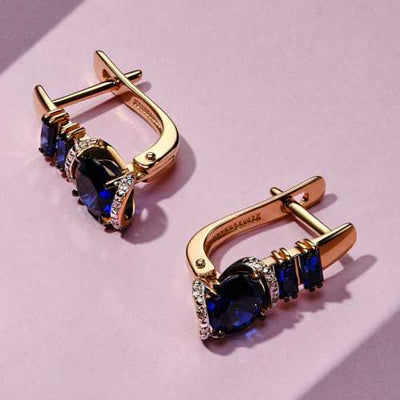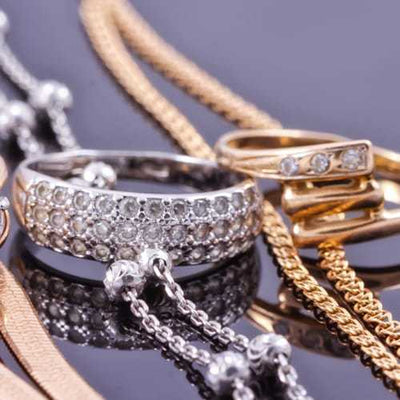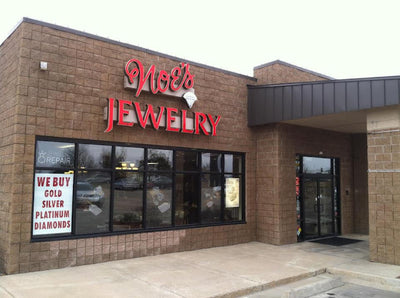With so many different gemstone varieties out there, it can be hard to keep them all straight. There are two primary green gemstones available: peridot and emerald. While emeralds are known for their darker green hues, peridot is typically a yellowish-green color. At Noe’s Jewelry, we offer a variety of different peridot pieces for our customers, but we also want to teach people about these unique stones.
What Is Peridot?
Peridot is the gem variety of the mineral olivine. The chemical composition of this stone also includes iron and magnesium. Iron is the cause of the yellowish-green color for which peridot is known. Since the color of peridot is caused by its basic chemical composition instead of trace minerals, it is considered an idiochromatic gem. Due to its idiochromatic nature, peridot is one of the few gems that can only be found in one color, which in this case is green.
The term peridot comes from the Arabic word for gem—”faridat.” Peridot is one of the oldest known gemstones, and there are records dating back to 1500 B.C. of peridot.
Where Is Peridot Found?
Peridot is found in lava, meteorites, and deep within the mantle of the earth. Some of the peridot found on earth is ancient. This ancient peridot is found in pallasite meteorites, which are remnants of our solar system’s birth. Peridot has even been found in comet dust that was brought back from the Stardust robotic space probe in 2005. Other extraterrestrial sources of peridot include meteors, Mars, and the moon.
Peridotite rock, which contains peridot gems, is mined in countries like China, Vietnam, and the United States. Some peridots have even been found in Finland, Pakistan, Myanmar, and Zabargad. The stones with the best color usually come from Myanmar and Pakistan.
4 C’s for Peridot
 Much like diamonds, there is a grading standard for other gemstones. Peridots are no exception. Here is how expert gemologists evaluate these gems.
Much like diamonds, there is a grading standard for other gemstones. Peridots are no exception. Here is how expert gemologists evaluate these gems.
Color
The color range for peridot is incredibly narrow. While yellowish green is the most common color, the range spans from brown-green to pure green. The finest color quality is pure green without any hints of either yellow or brown. The pure green color tends to be most commonly found in stones weighing 10 carats or more. The lowest quality of gems will be brownish.Clarity
Most of the high-quality peridot gems on the market will have no eye-visible inclusions. However, they might have tiny black spots that are visible under magnification. Other inclusions that are common in these stones are reflective, disk-shaped inclusions. They are called lily pads because they resemble the plant.Cut
Peridot is a gem that lends itself to a variety of shapes and cutting styles. They can be cut into all standard gem shapes with no issues. Cutting styles, including brilliant, step-cuts, and mixed cuts, can all be used on the stones as well.Carat
Peridots are often found in a variety of different sizes. In smaller sizes, this stone is relatively inexpensive. However, large gems can be very costly.Caring for Peridot
Peridot is a moderately hard stone, falling between a 6.5 and 7 on the Mohs scale. While the gem is durable enough to be worn as jewelry, it needs to be treated with care. Scratches and fractures are possible when the stones are banged around. Acids can also be damaging, so use caution when wearing jewelry containing these gems.
To clean your peridot gems, you should use only warm, soapy water. Neither ultrasonic or steam cleaners are recommended to clean these stones.
If you are in the market for a new piece of jewelry and you are considering peridot, stop on by Noe’s Jewelry today in Raymore, Missouri. Our team of expert jewelers can help you pick the perfect peridot piece for yourself or a loved one.
Check out the other stones in our Gemstone Series Guides:





